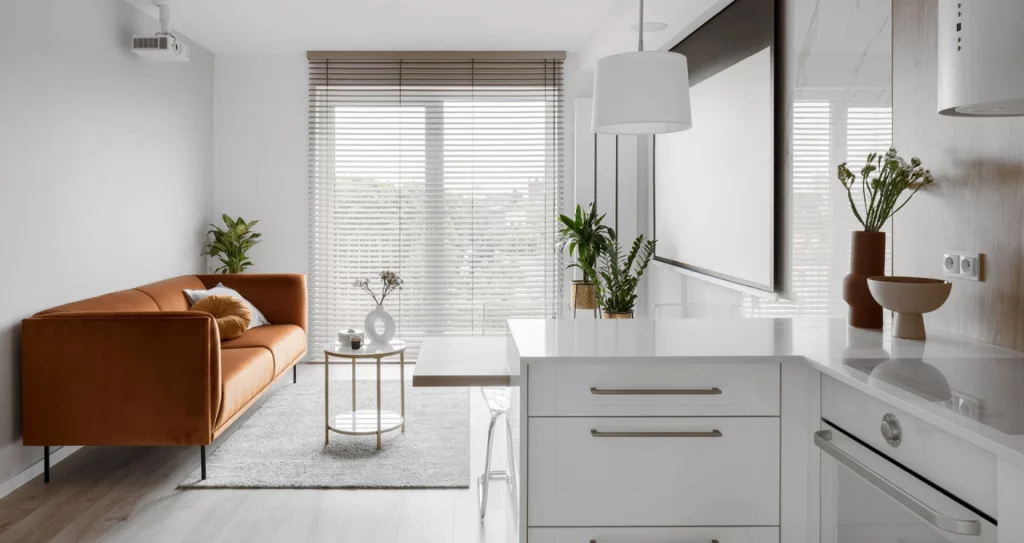
In this article we answer your question “What is a buy to let property?”. A buy to let property is a property that is bought to rent out to tenants. This type of investment provides rental income and potential property value growth.

The concept of a buy to let property is simple: you purchase a property with the sole intention of renting it out to tenants. Some investors do this with one property to earn extra income whilst maintaining a job as their main income source and others become full-time landlords by owning multiple BTL properties.
Buy to let properties are popular as they offer investors two streams of income. Firstly, there’s the rental income, a regular source of earnings as you let the property to tenants. Secondly, there is the appreciation of the property value over time, which could significantly increase the return on investment when the property is eventually sold.
When it comes to the financial side of buy to let investments, there are a few important points to keep in mind. First, you generally need a bigger deposit for buy to let mortgages (usually around 25% of the property’s total value). Unlike regular residential mortgages, buy to let mortgage payments often include both interest and principal, though many investors choose interest-only payments. This means your monthly payments are lower, but the total loan amount stays the same throughout the mortgage term.
Our monthly payment plans make investing in our off-plan properties much more accessible by allowing investors to spread their deposit over the construction period (typically 24 months) of the property. Not only that once the property is ready, our expert team can help you to find and secure the best mortgage for you, and should you want it, will even manage the letting of the property on your behalf.
The majority of BTL mortgages are structured on an interest-only basis, meaning your monthly mortgage payments will only cover the interest, leaving the principal to be repaid at the end of the mortgage term. This is different from a typical residential mortgage, which usually involves paying off both the principal and interest over time.
Affordability for a buy to let mortgage is assessed differently to standard mortgages. Instead of looking at the borrower’s personal income, mortgage lenders consider the potential rental income, which should ideally be at least 125% of the landlord’s mortgage payments. Some lenders may require the rental income to be 25% to 45% higher than the mortgage payment, depending on their criteria. This ensures a buffer for the landlord against potential vacancies and unexpected expenses, protecting the financial health of the investment property.

Understanding rental yield and the potential return on investment is necessary for calculating the success of a buy to let property. To calculate the gross rental yield, you divide the annual rental income by the property’s purchase price and then multiply by 100. A more nuanced figure, the net rental yield, takes into account the annual costs before dividing by the property price.
Being a landlord comes with a number of legal responsibilities. A landlord’s primary duty is to ensure that the rental property is compliant with various safety regulations and is free from health hazards. This includes the maintenance of gas and electrical equipment, adhering to the Electrical Safety Standards, and providing an up-to-date Energy Performance Certificate (EPC). Failure to meet these standards can result in severe penalties.
The legal landscape for landlords often changes and with the UK general election happening on the 4th of July, there may be more changes coming soon.
There are several specific tax implications for landlords. Here are some of the key ones for UK landlords to be aware of:
Capital gains tax is something to bear in mind but only comes into force upon the sale of the property. Profits from property sales are taxed at 18% or 28%, depending on the taxpayer’s rate.
Corporation tax rates apply to landlords operating through limited companies, with a tiered system based on profits. Understanding these tax responsibilities and planning accordingly is important and can be complicated, so it is always recommended that you consult with a financial expert.

Management of a buy to let property can be done by the landlord themself or outsourced to a professional lettings agency. Opting for self-management can save on letting agent fees and can help to foster a closer relationship with tenants, but this does require you to be knowledgeable about legal regulations and government guidelines regarding property management as well as being around to deal with any issues that arise and you are responsible for finding tenants.
Alternatively, employing the services of a lettings management agent, especially for overseas landlords or just those who prefer less day-to-day involvement, can be advantageous. Letting agents offer various levels of service, from tenant screening and reference checks to full property management, including maintenance and rent collection. While letting agent fees for fully managed services can impact the profitability of the investment property, they can provide peace of mind and operational efficiency for landlords who may not have the time or expertise to manage their properties themselves.
Many of our investors choose to leave the day to day management of their investment properties to us. We offer various lettings and management packages which include services such as tenant screening and reference checks to full property management, including maintenance and rent collection.
Investing in buy to let properties, like any investment, carries its share of risks and challenges. Whilst the UK housing market is generally steady, fluctuations can occur and interest rate changes can alter the cost of mortgage repayments, affecting your bottom line.
Managing tenants, ensuring the rental property meets legal standards, and addressing maintenance issues can be a time-consuming and demanding process. Economic downturns can lead to increased instances of rental arrears.
Careful planning and a clear understanding of the potential risks are crucial for anyone considering a buy to let property as a long-term investment.

Despite the challenges, buy to let remains a popular choice for those looking to generate a second income or to diversify their investment portfolio. The UK rental market has been experiencing robust growth, with rents rising consistently for over a year and a half. The appeal of buy to let is furthered by the long-term upward trend in house prices meaning that there is the prospect of significant capital gains.
To sum up, buying a property to rent out to tenants can be very financially rewarding when done correctly. By choosing to invest with Prosperity Wealth you get access to our wealth of knowledge and experience in property investments.
Contact us today via phone on +44 (0) 121 237 4610 or email [email protected] to get started or to ask any questions you may have.
A buy to let property is an investment property bought to generate income by renting it out to tenants and potentially benefiting from property value appreciation over time.
Typically, you will need a deposit of around 25% to 40% of the property’s value for a buy to let mortgage, depending on the lender’s requirements.
Yes, first-time buyers can access buy-to-let mortgages. However, they may encounter challenges such as needing a larger deposit and not being eligible for first-time buyer stamp duty relief.